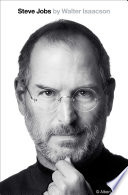

Steve Jobs is often celebrated for his visionary leadership style, which combined a deep understanding of technology with an innate sense of design and user experience. Jobs had the unique ability to foresee how technology could enhance everyday life, which allowed him to create products that resonated with consumers on a personal level. His leadership was characterized by a relentless pursuit of perfection and an unwavering belief in his vision, which often led to groundbreaking innovations like the iPod, iPhone, and iPad. Jobs’s approach to leadership also involved a hands-on management style, where he was deeply involved in product development and design processes. This level of engagement not only inspired his team but also ensured that the final products reflected his high standards and vision. His ability to articulate a clear vision and rally his team around it was a crucial factor in Apple's success, making it one of the most valuable companies in the world.
Continue readingJobs believed that design was not just about aesthetics but also about functionality and user experience. He famously said, 'Design is not just what it looks like and feels like. Design is how it works.' This philosophy drove Apple to create products that were not only visually appealing but also incredibly intuitive and easy to use. Jobs's obsession with design extended to every aspect of Apple's products, from the hardware to the software, and even the packaging. He understood that a great product should seamlessly integrate into the user's life, which is why Apple’s products often stand out in a crowded marketplace. The emphasis on design also fostered a culture of innovation at Apple, encouraging teams to think differently and push the boundaries of what was possible in technology.
Continue readingJobs was a master of innovation and disruption, consistently challenging the status quo of the technology industry. He understood that to succeed, one must not only create new products but also redefine existing markets. This was evident in how he transformed the music industry with the iPod and iTunes, revolutionized the smartphone market with the iPhone, and redefined personal computing with the iPad. Jobs believed in creating products that were not just an improvement over existing solutions but rather a complete rethinking of the category. His approach to innovation was holistic, focusing on the entire ecosystem of products and services that could enhance the user experience. This ability to disrupt industries and create entirely new markets was a key factor in Apple's meteoric rise and enduring success.
Continue readingJobs understood the power of branding and how it could influence consumer perception and loyalty. He believed that a strong brand could create an emotional connection with customers, making them more likely to choose Apple products over competitors. Jobs was meticulous about how Apple was presented to the public, from the advertising campaigns to the retail experience. He crafted a narrative around Apple that emphasized innovation, creativity, and a rebellious spirit, which resonated with consumers. This branding strategy not only helped Apple stand out in a competitive market but also fostered a community of loyal customers who identified with the brand's ethos. Jobs's focus on branding was instrumental in establishing Apple as a cultural icon and a leader in the technology industry.
Continue readingJobs's journey was not without its challenges, and his resilience in the face of adversity is a significant theme in his story. After being ousted from Apple in 1985, he faced a period of uncertainty but used that time to explore new ventures, including NeXT and Pixar. His perseverance paid off when he returned to Apple in 1997, where he led the company through a remarkable turnaround. This chapter of his life illustrates the importance of resilience and the ability to learn from failures. Jobs’s determination to overcome obstacles and his refusal to give up on his vision serve as powerful lessons for anyone aspiring to achieve greatness in their field. His story emphasizes that setbacks can be opportunities for growth and reinvention.
Continue readingJobs was known for his demanding nature, but he also recognized the importance of collaboration in achieving great results. He built a team of talented individuals at Apple and fostered an environment where creativity and innovation could flourish. Jobs encouraged open communication and collaboration among departments, breaking down silos that often hinder innovation in large organizations. He believed that great ideas could come from anywhere within the company, and he sought input from various teams to refine and improve products. This collaborative approach not only led to the development of groundbreaking products but also created a culture of teamwork and shared purpose within Apple.
Continue readingSteve Jobs's legacy extends far beyond the products he created; it encompasses a profound impact on the technology industry and popular culture. His vision and approach to innovation have inspired countless entrepreneurs and business leaders. The principles he championed—design excellence, user experience, and the importance of branding—continue to influence how technology companies operate today. Jobs's story serves as a reminder of the power of creativity and the potential of technology to change the world. His legacy is evident in the way we interact with technology, the products we use daily, and the cultural narratives surrounding innovation and entrepreneurship.
Continue reading